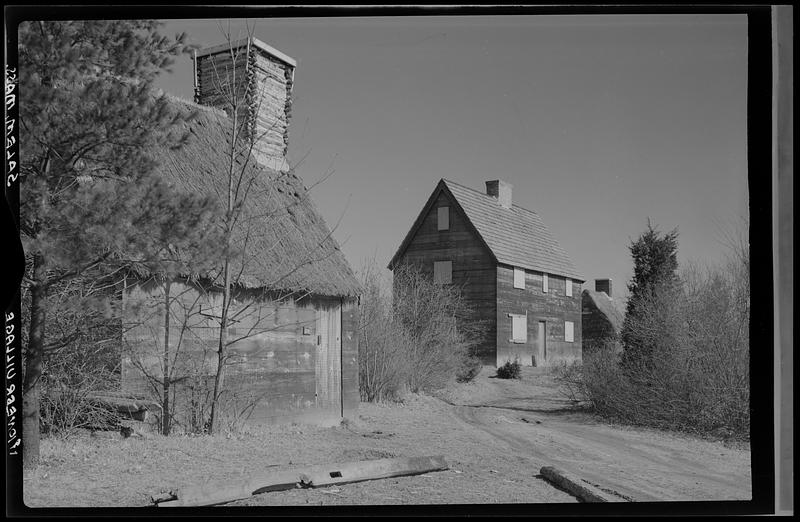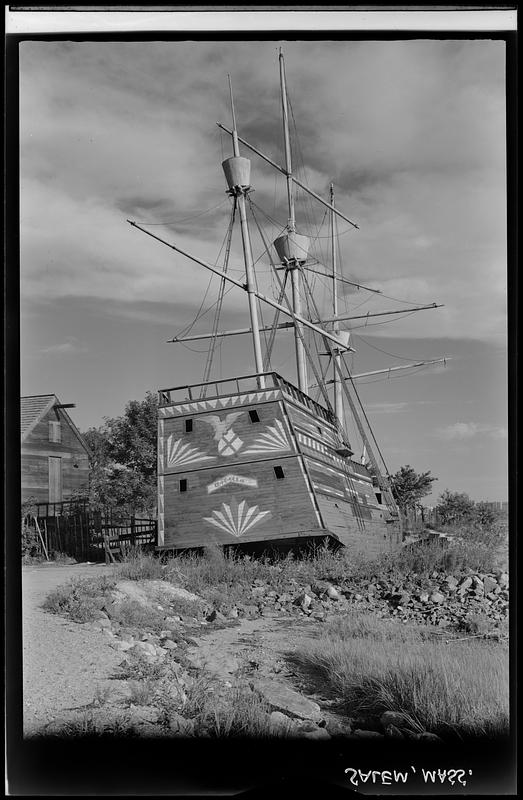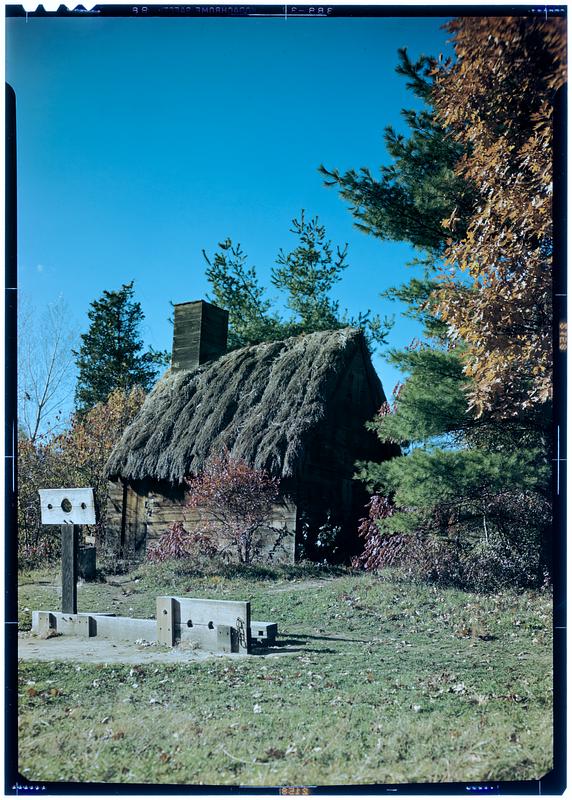Pioneer Village, also known as Salem 1630: Pioneer Village, is a living history museum that depicts life in Salem in the 17th century.
The museum, which is owned by the city of Salem, is a re-creation of what Salem would have looked like at the time John Winthrop and his fleet arrived in 1630.
Built in 1930, the museum was a part of Salem’s contribution to the Massachusetts Tercentenary celebration and is one of the oldest open air living history museums in the United States.
The museum is located in Forest River Park and is five acres in size and features 12 buildings, which includes thatched roof cottages, a governor’s mansion, a blacksmith shop, a sawpit as well as a recreation of the Naumkeag Native-American complete with wigwams and dugouts.
The village was designed in 1930 by architect George Francis Dow of the Society for the Preservation of New England Antiquities and originally featured 12 buildings and a replica of the ship Arabella, one of the ship’s that brought the Winthrop fleet to the New World.
Dow also created a pond with two islands to simulate the Mill Pond and the 12 buildings were arranged near the pond in clusters. One of these buildings was the Ruck House, which was a historic building that had been moved from the site of the newly constructed Post Office at the time.
Five reproduction English framed houses were constructed in a row set back from the pond. The houses were one-story cottages with thatched roofs, pine walls, and either brick or catted (log and clay) chimneys. On a small hill to the north and west of those houses, three wigwams were constructed along with four dugouts.
In additions to these small cottages was the Governor’s Fayre House, which was a replica of the house that Roger Conant moved from Weymouth and later became Governor John Endecott’s house in 1630. The house had wood shingles, a brick chimney, walls made out of wide flush boards and diamond-paned casement windows.
Surrounding these buildings were a series of recreated workplaces, such as a blacksmith shop, brickmaker, carpentry shop, fish drying, saltmaking as well as stocks and pillors to depict what punishments were used as the time.
To recreate the natural landscape of 1630, over 2,000 trees, shrubs and vines were planted as well as 2,000 herbaceous plants.
On June 12, 1930, a performance was held at the village to illustrate daily life in the Massachusetts Bay Colony and the arrival of the ship Arabella on that summer day in 1630. The village was only intended to be used for the year and remained neglected afterwards.
Due to the museum’s neglect and isolated location, vandalism became a recurring problem at the village.
In 1954, the Arabella ship was damaged by Hurricane Carol and then burned by the city. The Ruck House burned down in 1960s and was replaced by a simple frame structure that served as the visitor center.
Two more of the 12 buildings burned down, one in the 1960s and one was burned by an arsonist in 1976. One of these buildings was replaced by a similar building but it was not a reproduction.
At some point, the wigwams, blacksmith shop and animal dugouts were destroyed or damaged but it is not known when exactly.
In 1985, the city of Salem Park Commission voted to demolish Pioneer Village. Then, in 1986, the park commission changed its mind and instead signed a contract with Pioneer Village Associates to restore and manage the attraction.
The Pioneer Village Associates rebuilt the village, cleared brush and planted herb gardens. After years of work, the museum finally reopened to the public in 1988.
In the late 1980s, the Salem Historical Commission determined that Pioneer Village was eligible for the National Register of Historical Places and submitted it for review.
In 1988, the National Register of Historical Places reviewed Pioneer Village but declined adding it the list, stating that the damage and loss of the original buildings over the years has diminished its historical value.
In June of 1990, the museum held a grand reopening ceremony and in October of 1992, scenes from the Disney film Hocus Pocus were filmed at Pioneer Village.
In 2008, Gordon College signed a five year contract with the city of Salem to manage Pioneer Village and the historic Old Town Hall building on Essex Street and promised $125,000 for maintenance and renovations of the two sites.
The college made many improvements to Pioneer Village, such as rebuilding the wigwam, restoring the blacksmith shop, replacing broken windows, re-thatching roofs, reconstructing the fences around the property, building bridges over two brooks at the site and replanting gardens.
In May of 2013, Gordon College decided not to renew its agreement to manage Pioneer Village so it could instead focus exclusively on managing the Old Town Hall.
In June of 2013, the Park and Recreation Commission voted in favor of Elizabeth Peterson, director of the Witch House, taking over management of Pioneer Village. Peterson continues to manage Pioneer Village today.
Sources:
Luca, Dustin. “With nearby park upgrades done, Salem’s Pioneer Village looks to a brighter 2019.” Salem News, 18 Jan. 2019, https://www.salemnews.com/news/local_news/with-nearby-park-upgrades-done-salems-pioneer-village-looks-to-a-brighter-2019/article_118fb643-8c0e-5672-bc2d-7c19154ec69a.html
Bray, Bethany. “Salem Pioneer Village may stay open for the summer.” Salem News, 19 June. 2013, salemnews.com/news/local_news/salem-pioneer-village-may-stay-open-for-summer/article_44c8557b-49f0-5502-8b9e-14120afa42e2.html
Bray, Bethany. “Back to the drawing board.” Salem News, 13 May 2013, salemnews.com/news/local_news/back-to-the-drawing-board/article_a99bf155-9bd7-5e79-82f9-5bd5f80e2f1a.html
Rattigan, Dave. “College takes historic sites under its wing.” Boston Globe, 31 July. 2008, archive.boston.com/news/local/articles/2008/07/31/college_takes_historic_sites_under_its_wing/
McAllister, Jim. “Pioneer Village.” Salem Web, salemweb.com/tales/pioneervillage.php
“Pioneer Village.” MACRIS.net, Massachusetts Cultural Resource Information System, Massachusetts Historical Commission, mhc-macris.net/#!/details?mhcid=SAL.GM




I am a living relative of Governor Bradford. I wish to thank people for the decency they showed my husband and I even visiting some years ago. We took pictures and still have the films. Thank you again.
LINDA JEAN [ROGERS], COOK , Hendrick.
MOTHER WAS A ROGERS.